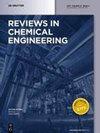垂直管道中长孤立气泡速度和形状的势流解综述
IF 6.6
3区 工程技术
Q1 ENGINEERING, CHEMICAL
引用次数: 1
摘要
摘要在过去的一个世纪里,人们对细长气泡在垂直管道中的运动进行了广泛的研究。出于这种好奇心,出现了许多经验和数值相关性;其中,已经提出了分析解决方案。本文综述了基于势流理论方法的主要结果和解决方法。用势流形式给出了单个细长气泡在停滞或运动液体中上升的控制方程。详细研究了两种不同的分辨率方法(幂级数法和全导数法)。结果(速度和形状)与表面张力效应有关。一种新的多目标求解器与全导数方法相结合的使用改进了解的研究,并证明了其在确定气泡速度方面的有效性。这篇综述旨在强调分析工具、解析方法的力量及其在文献中广为人知和广泛传播的结果背后的相关局限性。本文章由计算机程序翻译,如有差异,请以英文原文为准。
Review of potential flow solutions for velocity and shape of long isolated bubbles in vertical pipes
Abstract The motion of elongated gas bubbles in vertical pipes has been studied extensively over the past century. A number of empirical and numerical correlations have emerged out of this curiosity; amongst them, analytical solutions have been proposed. A review of the major results and resolution methods based on a potential flow theory approach is presented in this article. The governing equations of a single elongated gas bubble rising in a stagnant or moving liquid are given in the potential flow formalism. Two different resolution methods (the power series method and the total derivative method) are studied in detail. The results (velocity and shape) are investigated with respect to the surface tension effect. The use of a new multi-objective solver coupled with the total derivative method improves the research of solutions and demonstrates its validity for determining the bubble velocity. This review aims to highlight the power of analytical tools, resolution methods and their associated limitations behind often well-known and wide-spread results in the literature.
求助全文
通过发布文献求助,成功后即可免费获取论文全文。
去求助
来源期刊

Reviews in Chemical Engineering
工程技术-工程:化工
CiteScore
12.30
自引率
0.00%
发文量
37
审稿时长
6 months
期刊介绍:
Reviews in Chemical Engineering publishes authoritative review articles on all aspects of the broad field of chemical engineering and applied chemistry. Its aim is to develop new insights and understanding and to promote interest and research activity in chemical engineering, as well as the application of new developments in these areas. The bimonthly journal publishes peer-reviewed articles by leading chemical engineers, applied scientists and mathematicians. The broad interest today in solutions through chemistry to some of the world’s most challenging problems ensures that Reviews in Chemical Engineering will play a significant role in the growth of the field as a whole.
 求助内容:
求助内容: 应助结果提醒方式:
应助结果提醒方式:


